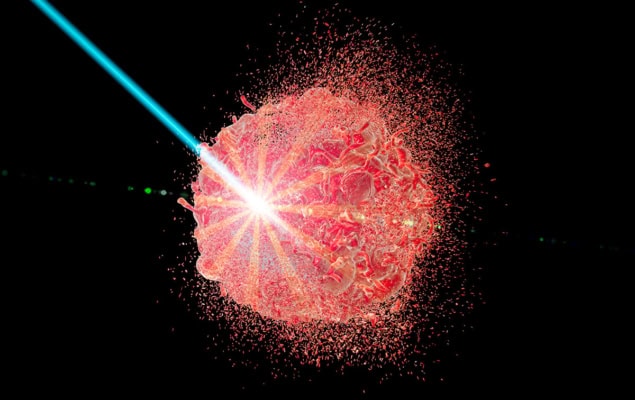Research from the ASTRID2 synchrotron in Denmark has highlighted the importance of interatomic Coulombic decay in radiation damage experiments

Studying the chain of processes that take place when UV or x-ray radiation interacts with solid matter is crucial in various fields from medical physics to materials testing.
The first of these processes is typically photoionisation, where an atom or molecule absorbs a photon and loses one or more electrons as a result.
What comes next can vary depending on the strength of the radiation and the nature of the material, but some of the most important effects are secondary ionisation processes. These often go on to dominate the dynamics of the whole system.
One of these is interatomic Coulombic decay (ICD), in which energy is transferred from one excited atom or molecule to a neighbouring one, which in turn is ionised.
ICD has captured considerable interest since its discovery, not least because it often produces low energy electrons which cause radiation damage in biological matter.
Understanding this phenomenon better was the team’s goal in this latest work. Using the ASTRID2 synchrotron in Aarhus, Denmark, they studied what happened when extreme UV photons interacted with small clusters of helium atoms.
To capture what was going on they used an electron velocity-map imaging spectrometer. This is a powerful diagnostic that measures any emitted electrons’ energy in addition to their angular distribution.
Using this technique, they were able to show that the ICD process is even more efficient than previously thought. The researchers expect it to play a crucial role in other condensed phase systems exposed to ionising radiation as well.
Knowledge gained from studies such as this one is crucial for fields like radiation therapy, where the effects of ionising radiation on human cells must be tightly controlled.
Read the full article
Ben Ltaeif et al. 2025 Rep. Prog. Phys. 88 037901
